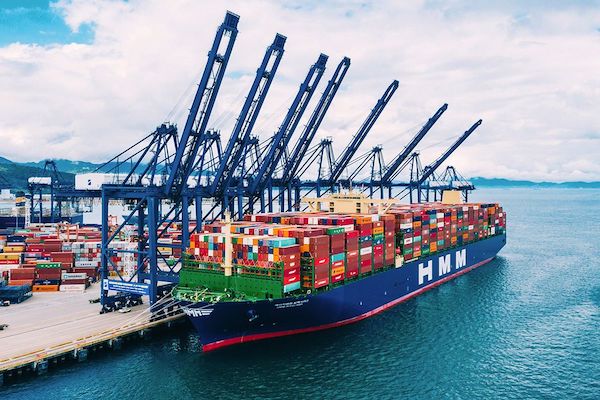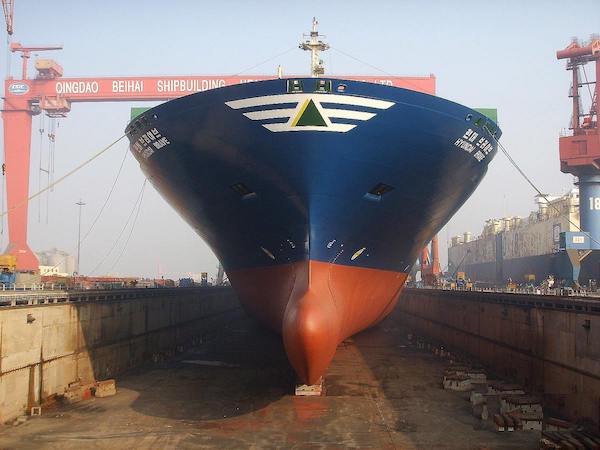A vessel’s CII rating can be enhanced through energy-saving measures, according to the IMO. A case in point is HMM, which cut its fleet’s CO2 intensity by 24% between 2019-2021.
The International Maritime Organisation’s (IMO) Carbon Intensity Indicator (CII) regulation came into effect for all cargo, RoPax and cruise vessels above 5,000 gross tonnes from January this year.
CII is a measure of how efficiently a ship transports goods or passengers. It is expressed in grams of CO2 emitted per mt of cargo and nautical mile. The ship is then rated every year from A to E (A being the highest), and the rating criteria will become stricter by 2030.
The IMO requires ships with a D rating for three consecutive years, or an ‘E’ rating in a single year, to take corrective actions to improve their CII ratings.
Improving CII rating through energy management

One of HMM’s container ships at a terminal in the Port of Algeciras. HMM
According to UK-based University Maritime Advisory Services (UMAS), vessels’ CII ratings can be enhanced by implementing operational measures like ship maintenance, waste-heat recovery and retrofits to improve energy efficiency.
South Korean shipping company Hyundai Merchant Marine (HMM) is a recent example of a shipping company that has invested in upgrading its vessels’ energy efficiency, with reduced carbon intensity as a result.
HMM reported a 58% reduction in the CO2 emissions generated by transporting one twenty-foot equivalent unit (TEU) container for 1 kilometre – from 68.7 g in 2010 to 29.05 g in 2021 – by applying various methods to reduce energy consumption.
The CII uses 2019 as its baseline year (not 2008 as the IMO’s greenhouse gas strategy does). Based on the CII baseline year, HMM reduced its CO2 emissions per TEU-kilometre by 24% between 2019 to 2021 – from 38.18 g to 29.05 g.
However, the South Korean shipping major has not specified how much its absolute CO2 emissions have decreased or increased over any period of time.
HMM says it has retrofitted its ships with bulbous bows to reduce frictional resistance on the hull surfaces, and improved their operational efficiency by using data-driven analytics to determine the best routes, speeds and cargo stowage techniques.

An HMM container ship in drydock being retrofitted with a bulbous bow structure. HMM
A bulbous bow is a curved protruding bulb-shaped structure at the bow of the ship that extends below the surface of the water. It is designed to improve the ship’s efficiency by reducing wave-making resistance, which increases the ship’s speed and fuel efficiency.
The IMO has advocated for retrofitting bulbous bows on ships, claiming they can reduce fuel consumption by around 3-5%.
HMM also placed an order for nine dual-fuel methanol-fuelled newbuilds to be delivered between 2025-2026. Running on methanol with low- or zero-emission potential can contribute to improving the vessels’ CII ratings further and reducing the company’s carbon footprint towards its self-imposed net zero carbon emission goal for 2050.
Source: Engine Technologies